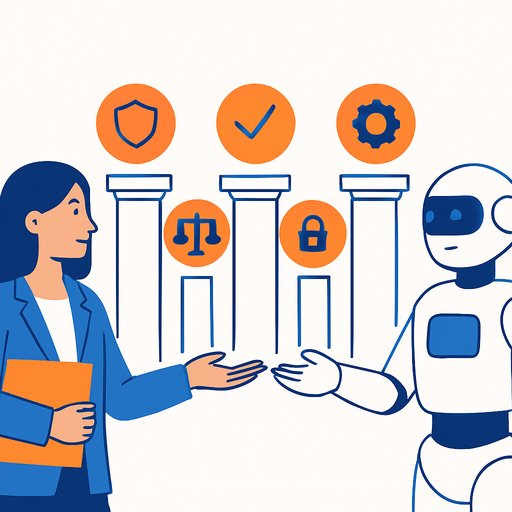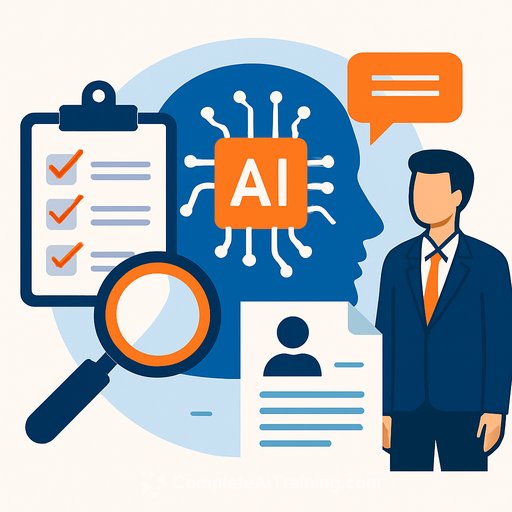Trusting The Digital Teammate: HR Governance And Trust For Agentic AI
Work keeps evolving. What changed recently is that software no longer just follows instructions-agentic AI can reason, coordinate tools, act, and escalate exceptions with limited human input. It feels less like software and more like a digital coworker.
That shift creates new questions for HR: Who decides? When can it act? When do we step in? The answer is clear-governance.
Why This Moment Is Different
Generative AI helped with drafting and analysis. Agentic AI goes further: it sets sub-goals, takes action across systems, and loops in humans only when needed. Without strong guardrails, it can drift, bias can creep in, and employee trust can drop.
HR's role is to define what the agent is allowed to do, why it exists, and how accountability works. IT's role is to make that intent enforceable and auditable.
HR + IT: Close The Governance Gap
HR owns culture, fairness, and employee experience. IT owns identity, access, logging, and safety. Together: HR sets the compass; IT builds the roadmap.
Agree on one operating rhythm: define, act, log, review, adjust. Start weekly; move to monthly once stable.
The Five Pillars Of HR Governance
1) Role Definitions (Scope And Autonomy)
Give every agent a job description: purpose, in-scope tasks, autonomy level, guardrails, escalation rules, outputs, and success metrics.
Use an autonomy ladder and require graduation based on shadowing and reversal-rate thresholds:
- A1 Assist: drafts and suggests; human approves
- A2 Advise: recommends with rationale; human can override
- A3 Act: executes within guardrails; escalates exceptions
Include a kill switch. "Paused" means no outbound actions and logging only.
Example: Recruiting Support Agent (A2)
- Purpose: Automate sourcing, screening, and scheduling; escalate ambiguous cases
- Autonomy: A2 (advises with rationale; humans approve risks)
- Guardrails: Exclude protected attributes, apply DEI policy, maintain audit logs
- Outputs: Candidate brief with match notes, rationale, and next-step suggestions
- Metrics: Recommendation quality, time saved, reversal rate, recruiter satisfaction
Outcome: Supports hiring speed and fairness while preventing drift.
2) Access And Permissions (Least Privilege)
Treat digital employees like human employees with scoped profiles. Control by system, dataset, field, and rate limit. Mask sensitive fields.
Start with shadow-only (read and log), then allow limited actions once audits pass.
Outcome: Lower risk of data leakage and accidental exposure.
3) Audit And Explainability (Trace The Why)
Every action should generate a decision record: inputs, action taken, timestamp, and a plain-language "why."
Example: "Candidate missing required certification per policy."
Outcome: Trust becomes inspectable, and decisions are appealable.
4) Continuous Bias Monitoring
Bias lives in history; agents inherit it unless you test for it. Use counterfactual checks (flip names or genders) and compare outcomes.
Review weekly at first; move to monthly once stable.
Outcome: Protects fairness, compliance, and brand equity.
5) Escalation And Human Oversight (Limits)
Define triggers for hand-off: low confidence, harassment or ethics cases, pay and promotion decisions, and disputes. Publish an escalation playbook so employees know who steps in, when, and how.
Outcome: Humans stay in charge of decisions that must remain human.
Multidisciplinary Alignment
- HR (Lead): Roles, autonomy ladders, escalation rules, audit cadence
- Legal/Compliance (Consulted): Privacy, retention, explainability, jurisdictional rules
- IT/Security (Accountable): Identity, access, logging, monitoring, rollback, kill switches
- Ops/Business (Informed): Workflows, SLAs, change-management impacts
Set a steady cadence: define, act, log, review, adjust. Weekly at first, then monthly.
Five Questions To Guide Adoption
- What decisions must remain human? Pay, promotions, discipline, ethics. Draw red lines with HR and legal early.
- How will we monitor behavior over time? Drift is slow and silent. Start with weekly audits, taper to monthly.
- Do we have secure, ethical infrastructure? Enforce identity checks, encryption, masking, and vendor compliance to earn trust.
- How will we ensure accuracy and trust? Require a "30-second why" for critical actions. If it can't explain, it can't decide.
- What will we measure beyond adoption? Time-to-competency, reversal rates, escalation response, bias incidents, and employee sentiment on fairness.
Quick-Start Playbook (90 Days)
- Pick high-frequency, low-risk pilots: onboarding FAQs, interview scheduling, compliance reminders.
- Set autonomy at A1 or A2. Enable undo and rollback rules.
- Issue least-privilege access profiles and mask sensitive fields.
- Turn on decision logs with plain-language explanations.
- Run weekly reviews in the first month; publish the escalation playbook and an employee appeals path.
- Track three signals: SLA lift, error reduction, and trust sentiment.
- Promote to A3 only after shadowing, red-team testing, and reversal-rate checks.
- Roll out to a small cohort before scaling; repeat the cycle as confidence grows.
KPIs That Matter
- Time-to-competency for new hires
- Reversal rates on AI suggestions
- Escalation response times
- Bias incidents detected and resolved
- Employee sentiment on fairness and trust
Standards And Guidance
If you need reference points for policy language and risk controls, see these resources:
Upskill Your Team
Give HR, recruiters, and managers a clear path to learn the tools and controls they'll be accountable for. A curated track by job role can speed adoption and reduce risk.
Trust Is The Advantage
The companies that set clear governance now will define workplace norms for AI agents. Treat agents like coworkers with limits, logs, and accountability. Trust isn't a slogan-it's a system you can audit.
Your membership also unlocks:






